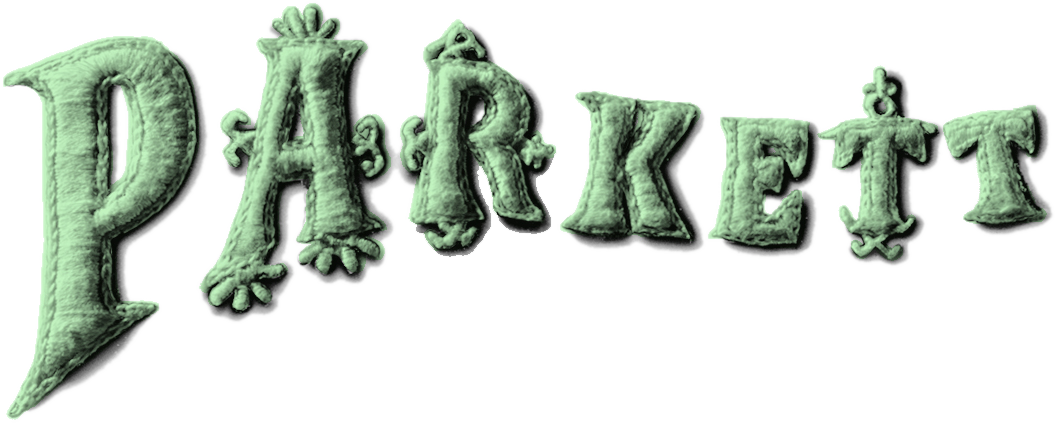Parkett Vol. 54 - 1998 | Roni Horn, Mariko Mori, Beat Streuli
Roni Horn
Read a selected text (PDF)
View edition
Mariko Mori
Read a selected text (PDF)
View edition
Beat Streuli
Read a selected text (PDF)
View edition
Insert Matthew Ritchie (PDF)
Spine Sylvie Fleury
Cumulus
On site specificity by Maria Lind (PDF)
Review of the XXIV Bienal de Sao Paulo (PDF)
Miscellaneous
Shirin Neshat by Paul D. Miller (PDF)
U.S. & Canada
Please place your order through our distributor D.A.P. here.
Browse Selected Texts and more on the Collaboration Artists
Artist Insert
Editorial
Future Dreams. What do those eyes see, those hypnotic, luminous eyes of the sprite on our cover? An enigmatic appeal emanates from the concentrated distillation of the real and the unreal in the roles Mariko Mori assumes in her pictures. Her futurist fantasies lay claim to a general, binding validity. In recent years, Japan has thoroughly imbibed the fantasy world of western youth. This universe, both imagined and real, is familiar without ever necessarily having been encountered at first hand. Behind Mariko Mori’s alchemy of awareness, we are astonished to discover once again the power of myth to create reality. It is as if the subject of this issue were that imaginary part of reality that accompanies us on our humdrum, prosaic paths as an iridescent balloon of fantasies. The works of Roni Horn and Beat Streuli also primarily target reality’s hidden images and energies despite the understated, laconic fixation of reality entailed in their choice of technical means. Beat Streuli could be said to photograph people as part of a flowing crowd, but the outcome may be diametrically opposed to our accumulated experience in this respect. For instance, a split second captured while descending into the underworld of a subway: Streuli’s gaze immerses the urban (ur-)scene in ecstatically beautiful light, distilling it into a silent, visual opera in the immense, rhythmical projection of his slides. The effect of recognizing the “pathos formula,” as Warburg called it, in emotions such as solemnity, composure, introspection, raptness is all the more disturbing due to the utter want of objective reasons for such feelings. Dreams of the future? “Subjects under advanced capitalism may still wake up and discover in the mirror a creature of skin and bone; yet the moment they step out into the metropolitan field, they at once become a vector of flows and energies, of bodies, information and goods, as a commuter, as a worker, as a consumer.” Yet, having said this, Norman Bryson sees Mariko Mori’s works as visions so agile and spiritualized, that they mutate into angels or bodhisattvas. Roni Horn reflects on “the rolling past and sometimes what’s to come” in her studies of an island far removed from global urbanity: Iceland. The artist is particularly drawn to the unobstructed view that “lays out the planet with an expansiveness and transparence that exists in few other places”. Her pictures of this place, marked by the weather, an extreme climate, and a still recent geological history, transform time and make it permeable to our gaze. It seems that the fragility of existence is more palpable here. The effect is sobering; it sharpens our view of the future and heightens the potential of dreams. Also in this issue an Insert by Matthew Ritchie.
Table of Content
One Flight Up – Alex Katz by Vincent Katz
What’s Wrong with Culture – Stephan von Huene by Horst Bredekamp
Roni Horn
Still by Collier Schorr
A Unique Vision of Iceland by Styrmir Gunnarsson
Standing on the Circumference of Roni Horn’s Asphere by Jerry Gorovoy
Notes from an Architect by Diane Lewis
Untitled (Flannery) – A Condensation of Acts by Nancy Spector
Mariko Mori
Cute Futures. Mariko Mori’s Techno-Enlightenment by Norman Bryson
No Angels Here, Yet She Lives by Shin’ichi Nakazawa
Mariko Mori’s Cyborg Surrealism by Thyrza Nichols Goodeve
Beat Streuli
Mapping the Anonymous by José Lebrero Stals
Beat Streuli’s Gesamtkunstwerk by Arthur C. Danto
The Doubleness of Character or the Doubleness of Photography by Taro Amano
Everyday Arcadias by Trevor Smith
Matthew Ritchie, Insert
Motion Capture: Shirin Neshat’s Turbulent by Paul D. Miller
Truth and Responsibility, A Conversation with William Kentridge, Les Infos du Paradis by Okwui Enwezor
Inside the XXIV Bienal’s Body, Cumulus from America by Valéria Piccoli
Spatial Facsimiles and Ambient Spaces, Some Reflections on Site Specificity in Contemporary Art, Cumulus from Europe by Maria Lind





